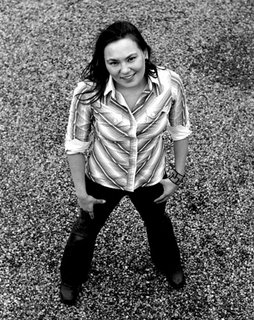Archives
- 01/01/2004 - 02/01/2004
- 02/01/2004 - 03/01/2004
- 03/01/2004 - 04/01/2004
- 04/01/2004 - 05/01/2004
- 05/01/2004 - 06/01/2004
- 06/01/2004 - 07/01/2004
- 07/01/2004 - 08/01/2004
- 08/01/2004 - 09/01/2004
- 09/01/2004 - 10/01/2004
- 10/01/2004 - 11/01/2004
- 11/01/2004 - 12/01/2004
- 12/01/2004 - 01/01/2005
- 01/01/2005 - 02/01/2005
- 02/01/2005 - 03/01/2005
- 03/01/2005 - 04/01/2005
- 04/01/2005 - 05/01/2005
- 05/01/2005 - 06/01/2005
- 06/01/2005 - 07/01/2005
- 07/01/2005 - 08/01/2005
- 08/01/2005 - 09/01/2005
- 09/01/2005 - 10/01/2005
- 10/01/2005 - 11/01/2005
- 11/01/2005 - 12/01/2005
- 12/01/2005 - 01/01/2006
- 01/01/2006 - 02/01/2006
- 02/01/2006 - 03/01/2006
- 03/01/2006 - 04/01/2006
- 04/01/2006 - 05/01/2006
- 05/01/2006 - 06/01/2006
- 06/01/2006 - 07/01/2006
- 07/01/2006 - 08/01/2006
- 08/01/2006 - 09/01/2006
- 09/01/2006 - 10/01/2006
- 10/01/2006 - 11/01/2006
- 11/01/2006 - 12/01/2006
- 12/01/2006 - 01/01/2007
- 01/01/2007 - 02/01/2007
- 02/01/2007 - 03/01/2007
- 03/01/2007 - 04/01/2007
- 04/01/2007 - 05/01/2007
- 05/01/2007 - 06/01/2007
- 06/01/2007 - 07/01/2007
- 07/01/2007 - 08/01/2007
- 08/01/2007 - 09/01/2007
- 09/01/2007 - 10/01/2007
- 10/01/2007 - 11/01/2007
- 11/01/2007 - 12/01/2007
- 12/01/2007 - 01/01/2008
- 01/01/2008 - 02/01/2008
- 02/01/2008 - 03/01/2008
- 03/01/2008 - 04/01/2008
- 04/01/2008 - 05/01/2008
- 05/01/2008 - 06/01/2008
- 06/01/2008 - 07/01/2008
- 07/01/2008 - 08/01/2008
- 08/01/2008 - 09/01/2008
- 09/01/2008 - 10/01/2008
- 11/01/2008 - 12/01/2008
- 01/01/2009 - 02/01/2009
- 04/01/2009 - 05/01/2009
- 07/01/2009 - 08/01/2009
- 09/01/2009 - 10/01/2009
- 10/01/2009 - 11/01/2009
- 11/01/2009 - 12/01/2009
- 12/01/2009 - 01/01/2010
- 03/01/2010 - 04/01/2010
Utopian Turtletop. Monsieur Croche's Bête Noire. Contact: turtletop [at] hotmail [dot] com
Friday, September 08, 2006
 A couple of years ago Alex Ross was singing the praises of Bjork’s album of vocal exploration, Medulla. When I found a used copy of the album, I picked it up. Featuring vocal beat-boxers, Icelandic choirs, and one of my favorite performers, Inuit throat-singer Tanya Tagaq, the album is a feast of vocals -- Bjork is no slouch herself in the vocal department.
A couple of years ago Alex Ross was singing the praises of Bjork’s album of vocal exploration, Medulla. When I found a used copy of the album, I picked it up. Featuring vocal beat-boxers, Icelandic choirs, and one of my favorite performers, Inuit throat-singer Tanya Tagaq, the album is a feast of vocals -- Bjork is no slouch herself in the vocal department. I had seen Tagaq twice at the Vancouver Folk Music Festival, and I saw her do two sets again at the Fest this year. Both sets brought tears to my eyes.
She’s the most genial and generous of performers. The first set I saw her with, she shared the stage with two of my faves, Najma and the singer/composer/pianist formerly known as Jane Siberry (now known as Issa, not, I hope, to be confused with the haiku poet Issa). As they all got settled Tanya made a point of approaching the other singers and warmly shaking their hands. They traded songs and they sang together, and Najma and Siberry sang beautifully, and Tagaq blew them away.
She builds her style on Inuit throat-singing and builds improvisations from there. Traditionally, the Inuit throat-singing style might not be considered a musical experience at all, but more of a game, where two women stand forehead-to-forehead, their hand’s behind each other’s heads, and try to make the other laugh as they chant the throaty breathing. The first two times I saw Tagaq at the Van Folk Fest, she included demonstrations of the game, and she always laughed -- she’s a joyful presence on stage.
As I said, Tagaq starts with the throaty breathing chant and builds from there. (A mainstream American equivalent might be if a singer were to develop a musical singing style based on the “hey batter hey batter hey batter batter batter” chatter of little-league and sandlot childhood infielders playing baseball.) Where she takes it is something to behold -- melodies and howls and screams and chants, with an unexpectedly beautiful and strong voice and a tremendous dramatic sense, evoking sex, birth, death, passion, love, compassion, suffering, joy. Incredibly powerful.
The next day I saw her do her “main stage” evening set. This tour she was with a sympathetically imaginative DJ and mixer, who gives good beats and loops her vocals effectively, neither creating huge riffs nor over-doing it, but doing it occasionally for dramatic emphasis. The last song she invited three virtuoso female vocalists to join her, women she met over the week-end festival, none of whose work I had heard before the week-end: a powerful but predictable blues singer from Toronto, a powerful and sophisticated Maori singer from New Zealand, and a powerful singer from somewhere in Europe -- it was a “United Colors” moment of Tagaq’s engineering, and before they started she gushed (she’s very gushy), “Have you ever seen three more beautiful women than these?”
Her mixer-DJ, Michael Red, laid down a beat and simple bluesy pre-recorded bass riff, and off they were, improvising, taking turns, singing together. I thought -- this is like an old-school jazz “cutting contest,” except they aren’t trying to show each other up, they’re trying to make something together. At one climactic moment, with all four of them wailing, Michael Red cannily dropped out, increasing the drama with his absence instead of trying to emphasize by doing something louder or more complex -- it was wonderful.
At the end of the song, the four singers collapsed in a group hug and jumped up and down together for a whole minute. They had DONE IT.
* * *
Tagaq’s recent album is fantastic, with wonderful clattering groove-less rhythms on a few songs from her husband’s traditional Basque percussion duo, and a cameo from Bjork on one song. It’s late, and I’ll let Bjork have the last word: she described Tagaq as “like Edith Piaf or something . . . totally emotional.”
Comments:
Post a Comment